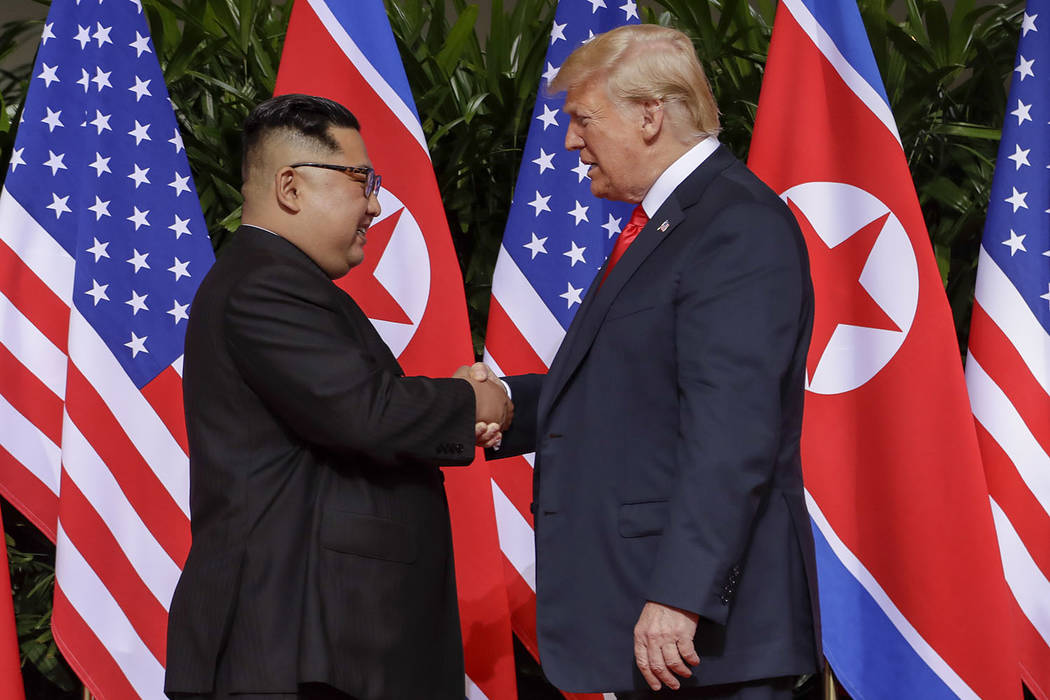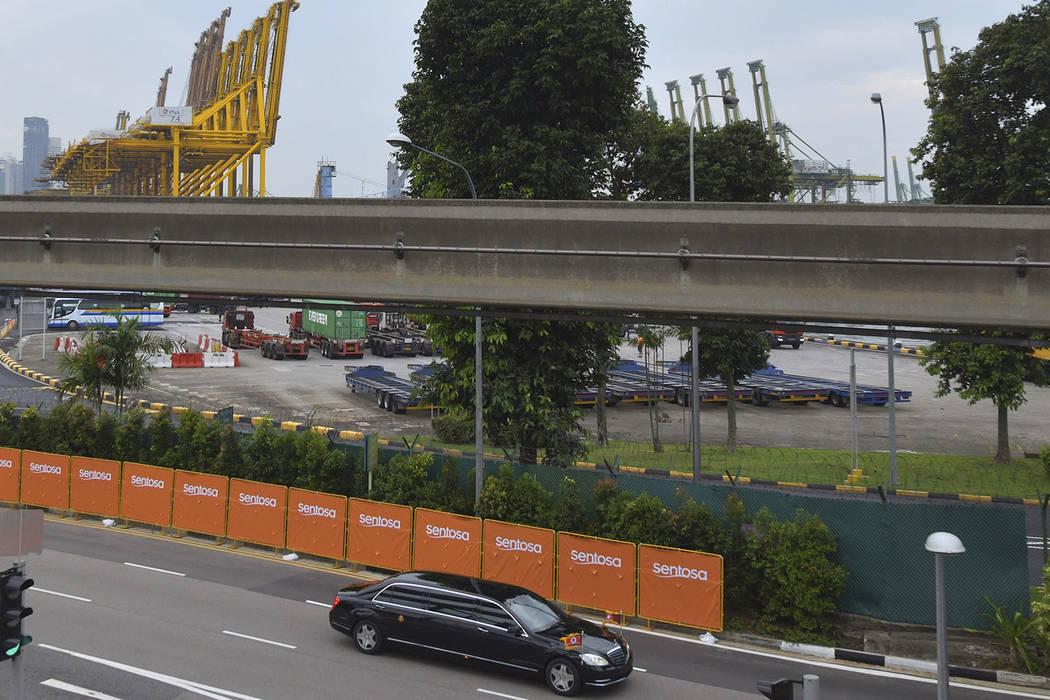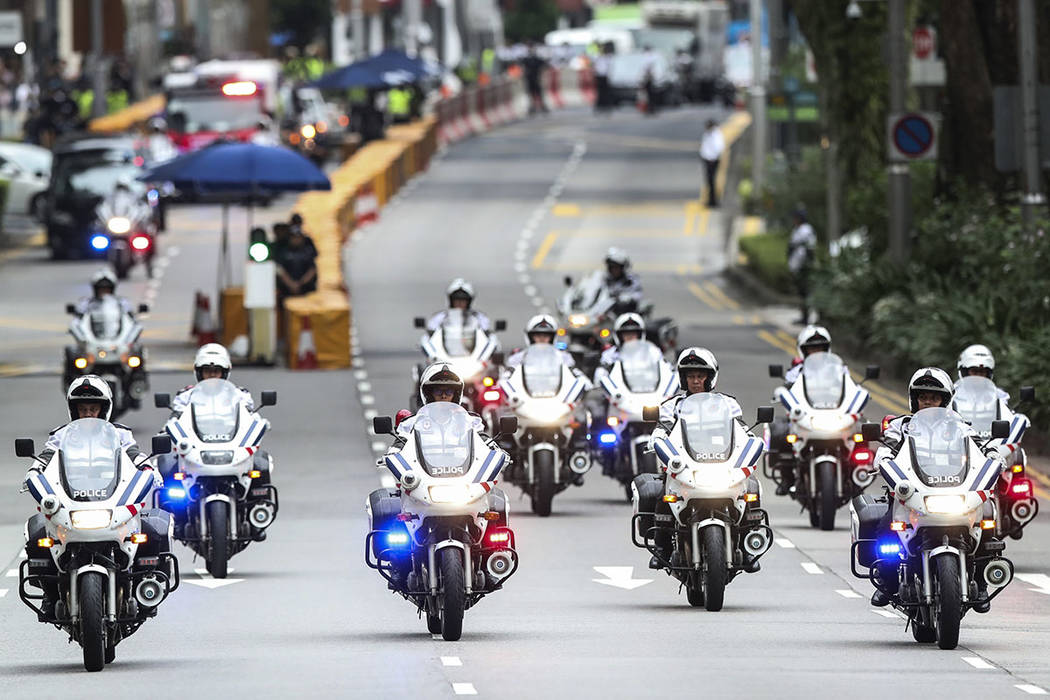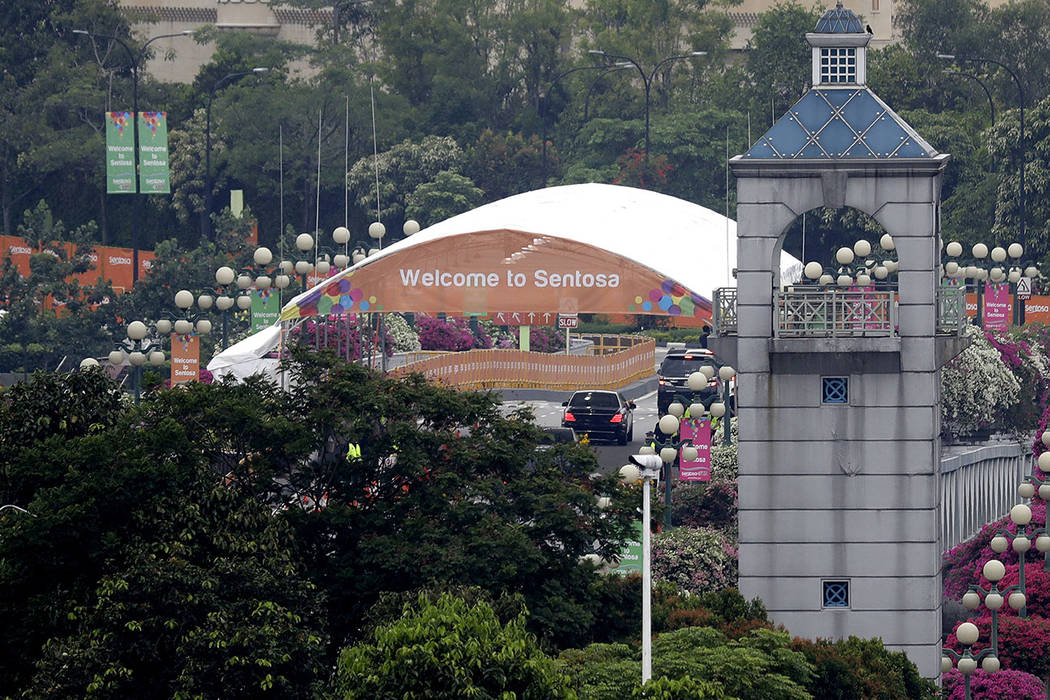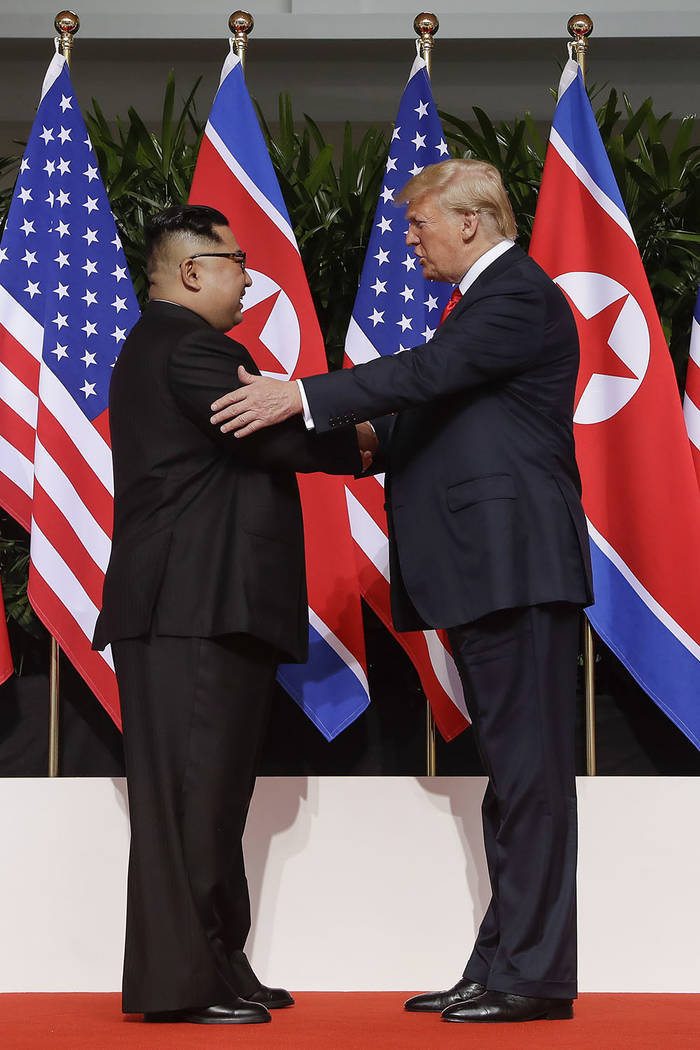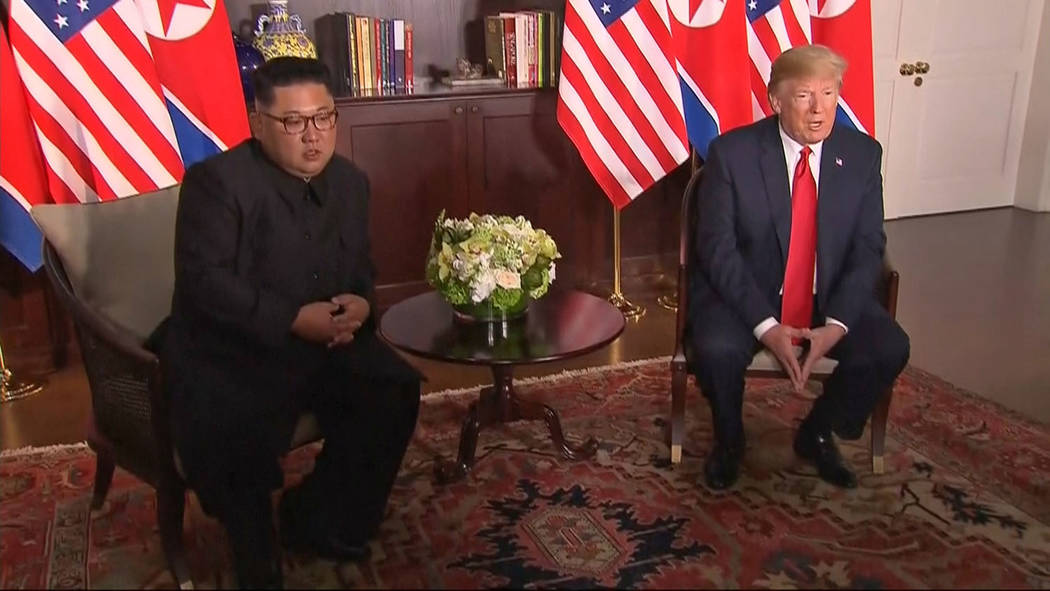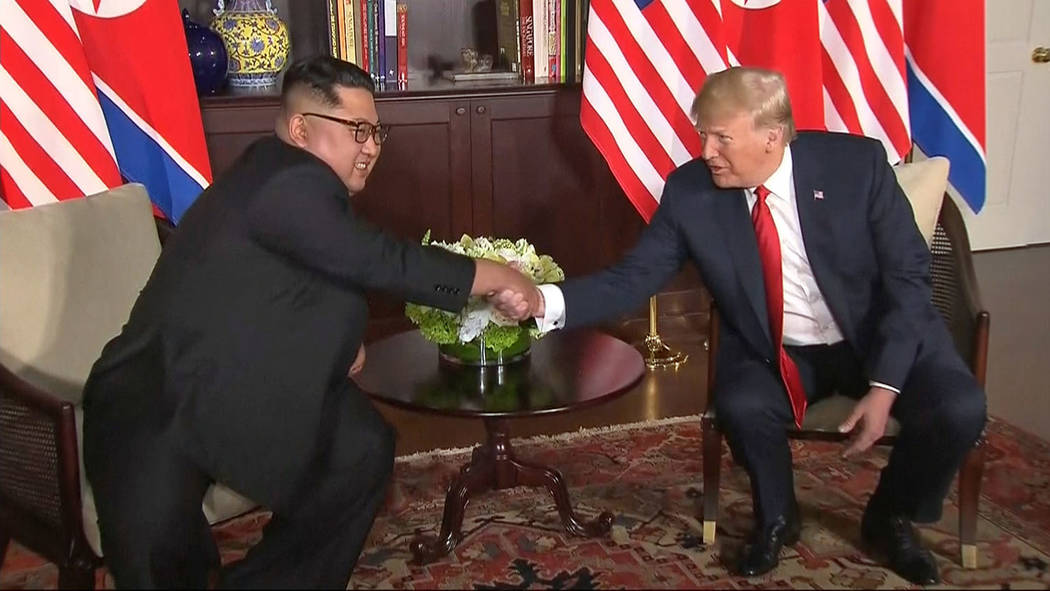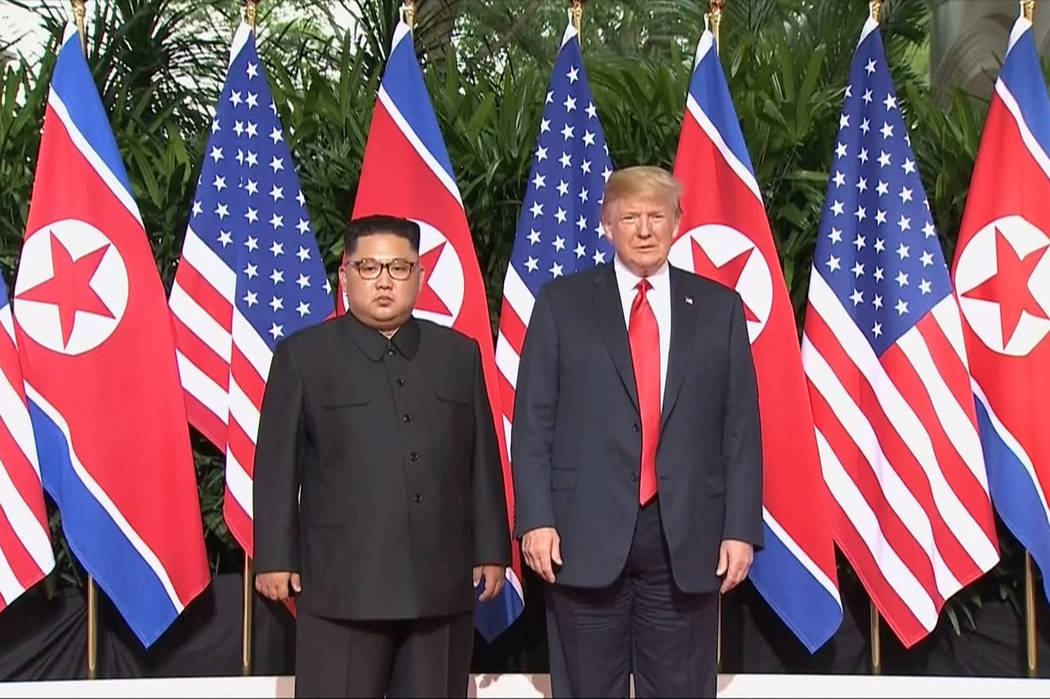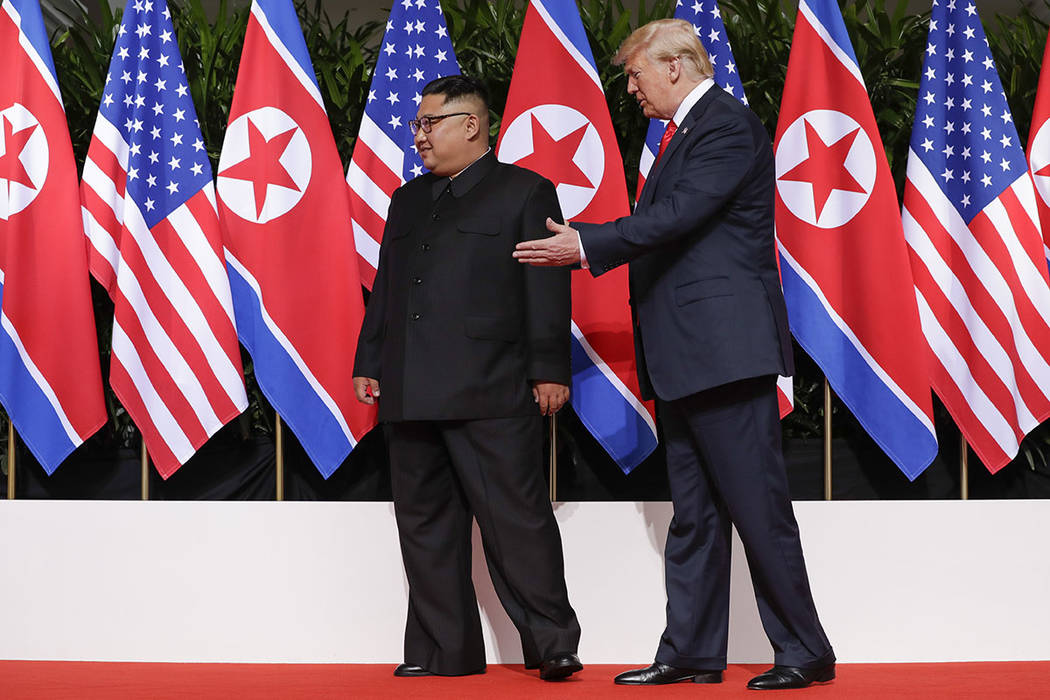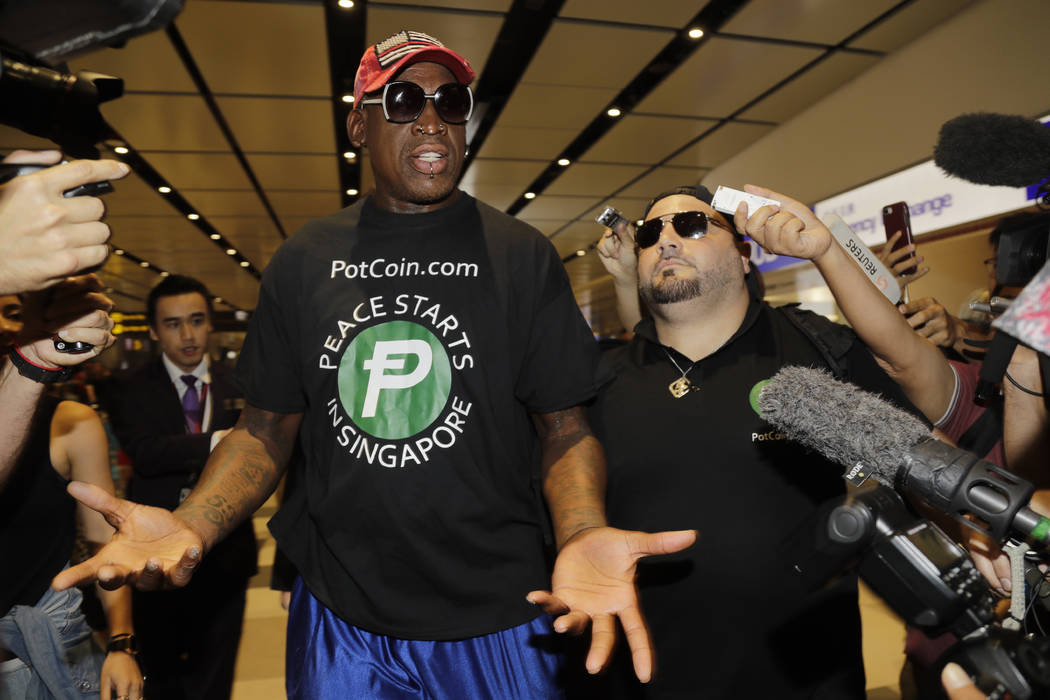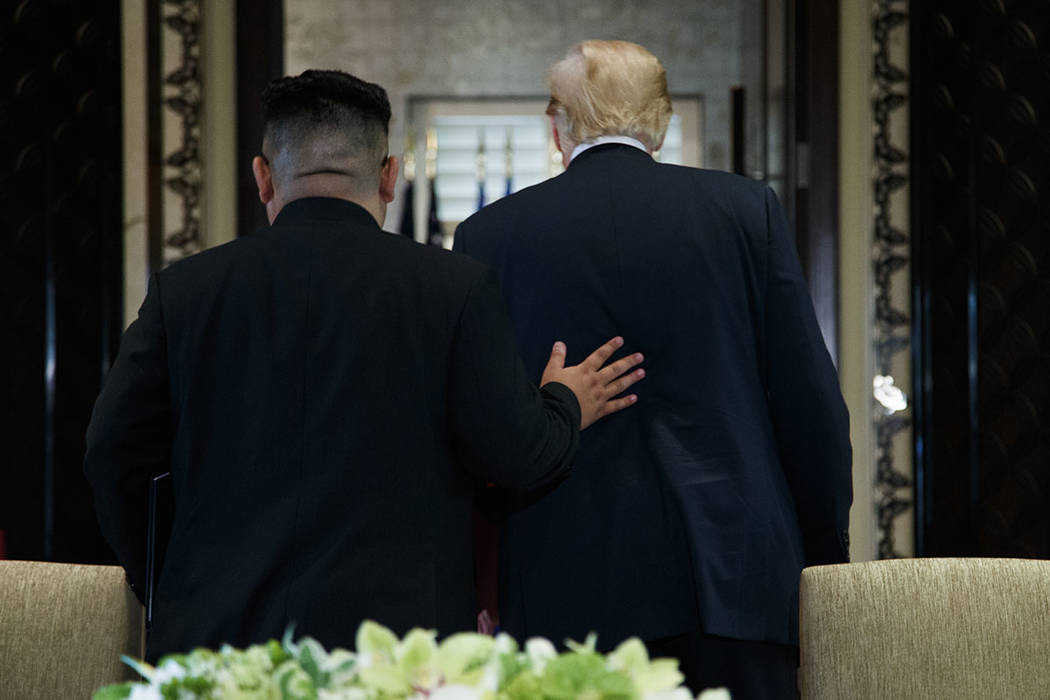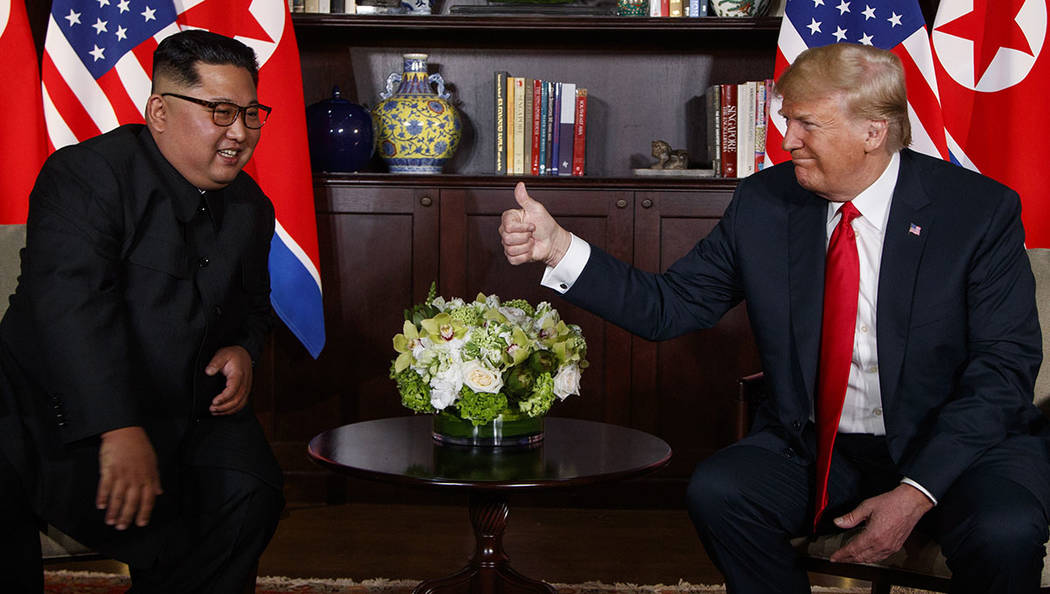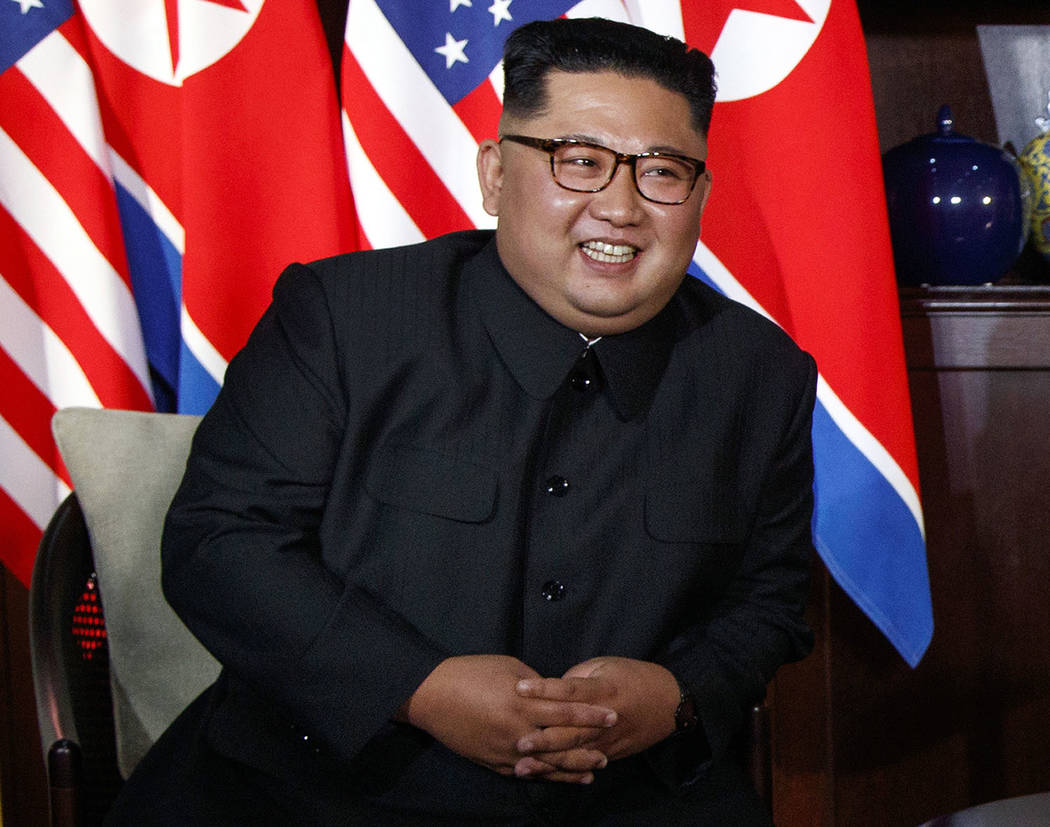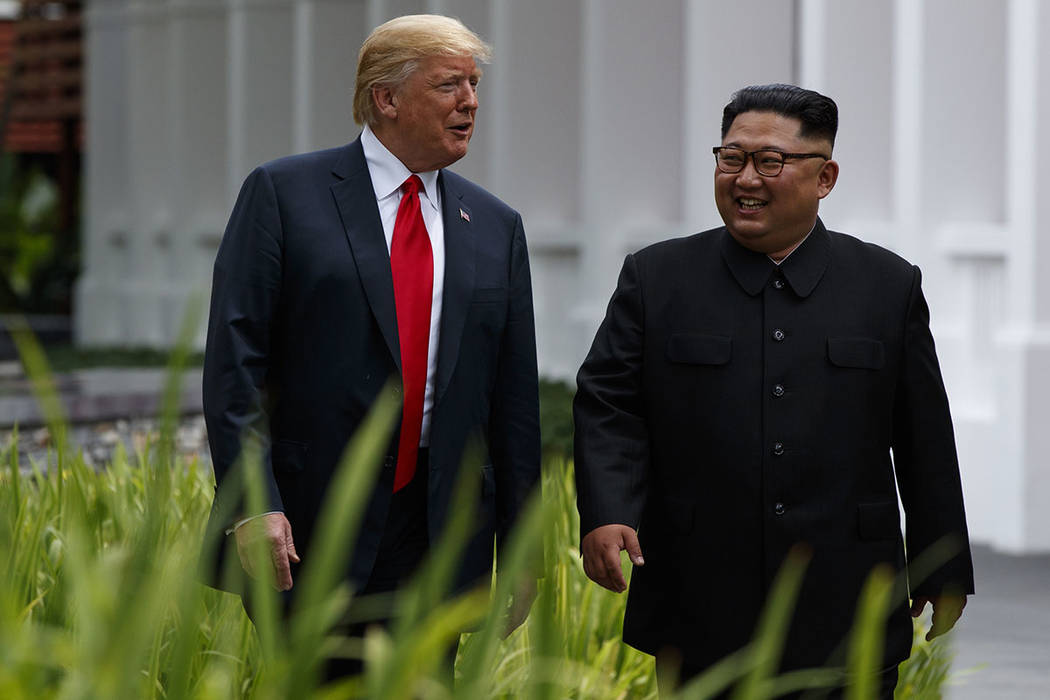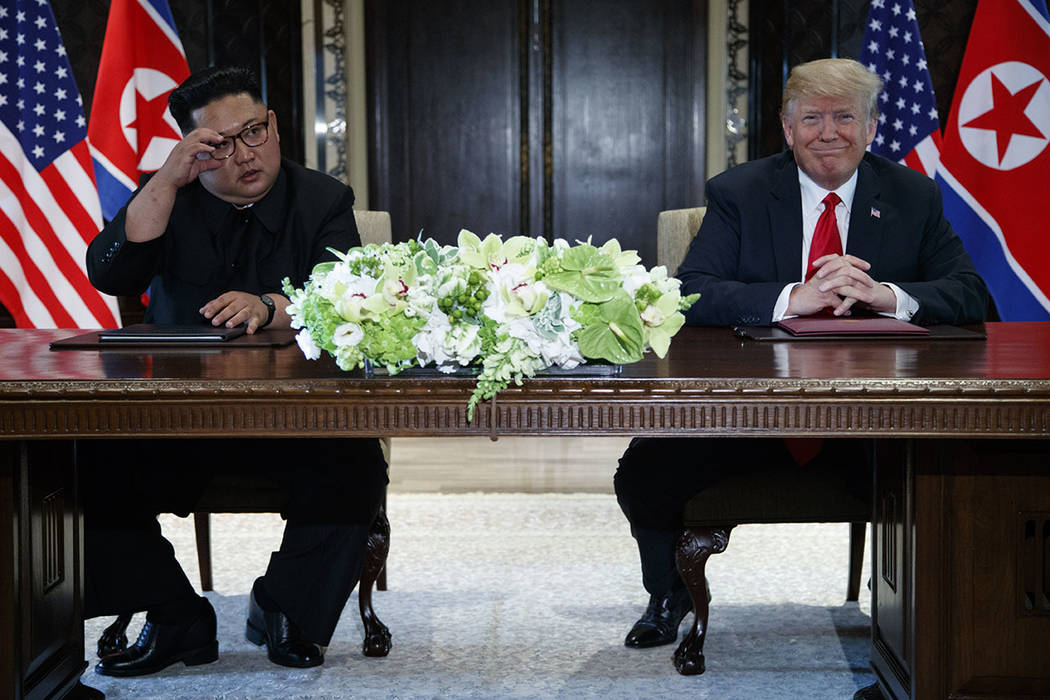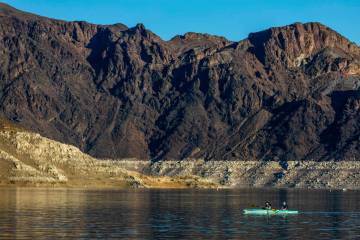Trump, Kim end historic summit with signing
SINGAPORE — The most powerful man in the world met with the most powerful man in North Korea on Tuesday morning at a summit in Singapore aimed at preventing a nuclear showdown.
A little after 1:30 p.m. local time, President Donald Trump and North Korean leader Kim Jong Un signed a joint document in which they commited to working “toward complete denuclearization of the Korean Peninsula.”
The document signed by the leaders at their historic summit Tuesday also said they will join efforts “to build a lasting and stable peace regime” on the Korean Peninsula.
The document laid out four broad commitments. It said the sides “commit to establish new U.S.-DPRK relations in accordance with the desire of the peoples of the two countries for peace and prosperity.”
Take a look--new agreement signed at #TrumpKimSummit. We zoomed in on photo of #POTUS holding it up and this is roughly what you'd see. There could be more--will it match what is provided later. Mixed reactions so far on what is new and isn't in preliminary language. pic.twitter.com/V3SdS8P7a7
— Richard Lui MSNBC (@RichardLui) June 12, 2018
And it said they will commit to recovering the remains of prisoners of war and those missing in action.
Trump said Tuesday as the leaders wrapped up their historic summit in Singapore that he and Kim “have developed a very special bond” during their day together.
And he said, “Both sides are going to be impressed with the result.”
Kim told reporters that “the world will see a major change.”
The first meeting between an American president and a North Korean leader began shortly after 9 a.m. with a handshake and a photo opportunity.
It was an extended grip and grin before a line of the two countries’ flags. Afterward, Trump and Kim went behind closed doors for a one-on-one meeting, but first they held a quick pool spray where the two shared small talk and pleasantries.
“We are going to have a great discussion and, I think, tremendous success. We will be tremendously successful,” Trump predicted.
Kim said through an interpreter: “It wasn’t easy for us to come here. There was a past that grabbed our ankles and wrong prejudices and practices that at times covered our eyes and ears. We overcame all that, and we are here now.”
After the two leaders met for just short of an hour, they began an expanded bilateral meeting with top advisers, including Secretary of State Mike Pompeo, national security adviser John Bolton and chief of staff John Kelly. Kim’s team included Kim Yong Chol, North Korea’s second-most-powerful official who visited Trump in the White House on June 1.
While Trump had hinted that he would know within the first minute if a nuclear deal would be struck, it is this meeting that likely will signal if the summit is stagecraft or the beginnings of a historic agreement that leads to a deal to denuclearize the Korean peninsula and brings Pyongyang into the international fold. After the meeting, the delegations held a lunch attended by Kim’s sister, Kim Yo Jong.
If negotiators emerge without a breakthrough, Stimson Center research analyst Jenny Town sees the exercise as a coup for Kim.
“It is amazing really, how he has gone from years of being one of the most hated, vilified world leaders to this political superstar in less than six months,” Town said. “Regardless of what happens at the Singapore Summit, Kim has already gained a big win, and one that as long as he refrains from nuclear and missile testing, will be resilient in the world’s imagination even amid potential sways in Trump’s moods in the future.”
Late Monday, the White House announced that Trump would be leaving Singapore early because the nuclear negotiations “have moved more quickly than expected.”
The abrupt change in schedule came shortly after Pompeo had seemed to lower expectations for the meeting, which Trump had earlier predicted could potentially yield an on-the-spot end to the Korean War. Recently, Trump too tried to tamp down expectations.
In March, Kim asked South Korean officials to invite Trump to meet for face-to-face negotiations in May. The bold invitation shone the world’s spotlight on the hermit kingdom and the repressive leader who had pushed the impoverished country — first run by his grandfather, then his father — closer to the dynasty’s goal of joining the elite band of nuclear powers.
Since assuming power in 2011, Kim has conducted nuclear tests and missile launches that suggest the isolated nation could fire nuclear warheads into South Korea, Japan and Guam, a U.S. territory.
As a candidate, Trump claimed that he could end Kim’s nuclear ambitions and had noted that he was willing to negotiate with North Korea. Trump quickly accepted Kim’s invitation to meet.
Bumps followed. Trump called off the summit in May, and then pronounced it on again on June 1.
After much speculation about where the summit would be, the two leaders found themselves Sunday night in Singapore with the whole world watching.
“Kim Jong Un is the one who initially initiated this entire meeting and so we have to think through what his goals are for this meeting,” Olivia Enos, policy analyst of the conservative Heritage Foundation, told the Review-Journal. “And I think primarily he wants legitimacy.”
Pompeo reiterated the administration’s goal when he said, “The complete and verifiable and irreversible denuclearization of the Korean peninsula is the only outcome the United States will accept.”
If Pyongyang does not move in that way, Pompeo warned, the White House will intensify the “maximum pressure” sanctions, which the administration believes brought Kim to the table.
Conversely, Pompeo said, if the Kim regime does move in the right direction, North Koreans should expect a brighter economic future.
At one point, Trump had suggested the meeting could last days, potentially even resulting in a nuclear deal. But U.S. officials have since avoided such lofty declarations. Abbreviating the meeting to a single day — now not even a full day — could make it easier to cast the summit as an early, symbolic opening, rather than a substantive negotiation in which a lack of tangible progress would suggest failure on the part of the negotiators.
Contact Debra J. Saunders at dsaunders@reviewjournal.com or at 202-662-7391. Follow @DebraJSaunders on Twitter. The Associated Press contributed to this report.



